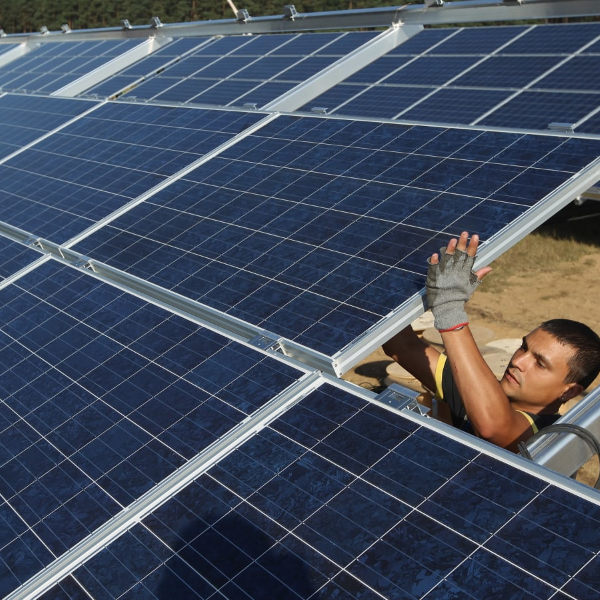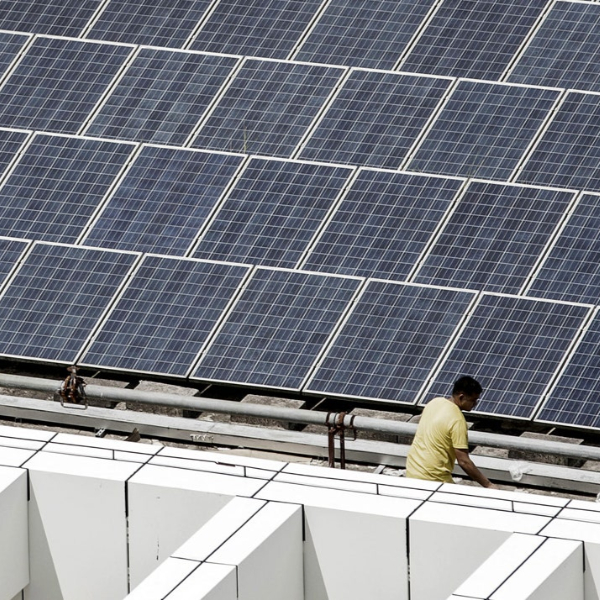In recent years, this is a question that has been raised by more and more people.According to the International Energy Agency, global solar power generation in 2020 was 156 terawatt-hours.According to the UK government, the UK produces more than 13,400 megawatts of energy and has more than one million installed.Solar panel installations also grew by an impressive 1.6% from 2020 to 2021.According to ResearchandMarkets.com, the solar market is expected to grow by 20.5% to $222.3 billion (£164 billion) from 2019 to 2026.

According to the “Guardian” report, the UK is currently facing an energy bill crisis, and bills may rise by as much as 50%.The UK energy regulator Ofgem has announced an increase in the energy price cap (the maximum amount an energy supplier can charge) from 1 April 2022.That means many people want to get the most out of their money when it comes to energy suppliers and energy sources like solar.But are solar panels worth it?
Solar panels, called photovoltaics (PV), consist of several semiconductor cells, usually made of silicon.The silicon is in a crystalline state and is sandwiched between two conductive layers, the top layer is seeded with phosphorus and the bottom is boron.When sunlight passes through these layered cells, it causes electrons to pass through the layers and create an electric charge.According to the Energy Saving Trust, this charge can be collected and stored to power household appliances.
The amount of energy from a solar PV product can vary depending on its size and location, but typically each panel produces 200-350 watts per day, and each PV system consists of 10 to 15 panels.The average UK household currently uses between 8 and 10 kilowatts per day, according to energy comparison website UKPower.co.uk.
The main financial difference between conventional energy and solar energy is the upfront cost of installing a solar photovoltaic system.“We offer an installation costing £4,800 [about $6,500] for a typical 3.5 kW home installation, including labor but excluding batteries. This is the average size of a UK home system and requires around 15 to 20 square metres [approximately] 162 to 215 square feet] panels,” Brian Horn, senior insights and analytics consultant at the Energy Efficiency Trust, told LiveScience in an email.
Despite the high initial cost, the average operating life of a solar PV system is around 30-35 years, although some manufacturers claim much longer, according to the Office of Energy Efficiency and Renewable Energy.
solar panel battery bank
There is also the option to invest in batteries to harvest any excess energy produced by the solar photovoltaic system.Or you can sell it.
If the photovoltaic system produces more electricity than your home uses, it is possible to sell the excess energy to energy suppliers under the Smart Export Guarantee (SEG).SEG is only available in England, Scotland and Wales.
Under the scheme, different energy companies set tariffs on the price they are willing to buy excess power from your solar PV system as well as other renewable energy sources such as hydro or wind turbines.For example, as of February 2022, energy provider E.ON is currently offering prices of up to 5.5 pence (about 7 cents) per kilowatt.There are no fixed wage rates under the SEG, suppliers can offer fixed or variable rates, however, according to the Energy Efficiency Trust, the price must always be above zero.
“For homes with solar panels and a smart expert guarantee, in London and the South East of England, where occupants spend most of their time at home, saving £385 [about $520] a year, with a payback of around 16 years [figures corrected Nov 2021] month]”, Horn said.
According to Horn, solar panels not only save energy and even make money in the process, they also add value to your home.“There is clear evidence that homes with better energy performance are selling for higher prices, and solar panels are a factor in that performance. With recent price increases across the market, the impact of solar panels on house prices There appears to be an increased focus on ways to reduce energy demand and switch to renewable energy sources,” Horn said.A report by the British Solar Trade Association found that solar power systems can increase the sale price of a home by £1,800 (about $2,400).
Of course, solar is not only good for our bank accounts, but it also helps reduce the damaging impact of the energy industry on our environment.The economic sectors that emit the most greenhouse gases are electricity and heat production.The industry accounts for 25 percent of total global emissions, according to the U.S. Environmental Protection Agency.
As a sustainable and renewable energy source, solar photovoltaic systems are carbon neutral and emit no greenhouse gases.According to the Energy Efficiency Trust, the average UK household implementing a PV system could save 1.3 to 1.6 metric tonnes (1.43 to 1.76 tonnes) of carbon emissions per year.
“You can also combine solar PV with other renewable technologies such as heat pumps. These technologies work well with each other because the solar PV output sometimes directly powers the heat pump, helping to reduce heating costs,” Horn said.“We recommend consulting your installer for exact maintenance requirements before you commit to installing a solar PV system,” he added.
Solar PV panels are not without limitations and unfortunately not every home is compatible with solar PV installations.”Depending on the size and amount of suitable roof space available for installing PV panels, there may be some limitations,” Horn said.
Another consideration is whether you need planning permission to install a solar PV system.Protected buildings, first-floor apartments and residences in protected areas may require permission prior to installation.
Weather can affect the efficiency of solar PV systems to generate electricity.According to E.ON, although solar panels will be exposed to enough sunlight to generate electricity, including cloudy days and winter, it may not always be at maximum efficiency.
“No matter how big your system is, you’re not always able to generate all the power you need and need to go through the grid to support it. However, you can adjust your power consumption, such as using appliances to generate electricity during the day when the panels are off,” Horn said.
In addition to installing a solar PV system, there are other costs to consider, such as maintenance.The electricity produced by solar panels is called direct current (DC), but home appliances use alternating current (AC), so inverters are installed to convert direct current.According to energy comparison website GreenMatch.co.uk, these inverters have a lifespan of between five and 10 years.The price of a replacement may vary by supplier, however, according to the standards body MCS (Micro-Generation Certification Scheme), this costs £800 (~$1,088).
Getting the best deal on a solar PV system for your home means shopping around.“We recommend choosing a certified system and certified installer when installing any type of home renewable energy system. Costs may vary between installers and products, so we recommend starting any work from at least Get quotes from three installers,” Horn suggested.”The Micro Generation Certification Program is the best place to start when looking for accredited installers in your area,” Horn said.
There is no doubt that the positive environmental impact of solar panels is worthwhile.As for their financial viability, solar PV systems have the potential to save a lot of money, but the initial cost is high.Every home is different in terms of energy usage and capacity of solar panels, which will ultimately affect how much money you can save with a solar PV system.To help you make your final decision, the Energy Saving Trust provides a handy calculator to estimate how much you can save with solar power.
For more information on solar panel energy, visit the UK Solar Energy and Energy Savings Trust.You can also find out which energy companies offer SEG licenses in this handy list from Ofgem.
Scott is a staff writer for How It Works magazine and has previously written for other science and knowledge brands including BBC Wildlife Magazine, Animal World Magazine, space.com and All About History magazine.Scott holds an MA in Science and Environmental Journalism and a BA in Conservation Biology from Lincoln University.Throughout his academic and professional career, Scott has been involved in a number of conservation projects, including bird surveys in the UK, wolf monitoring in Germany and leopard tracking in South Africa.
Live Science is part of Future US Inc, an international media group and leading digital publisher.Visit our company website.
Post time: Feb-25-2022





